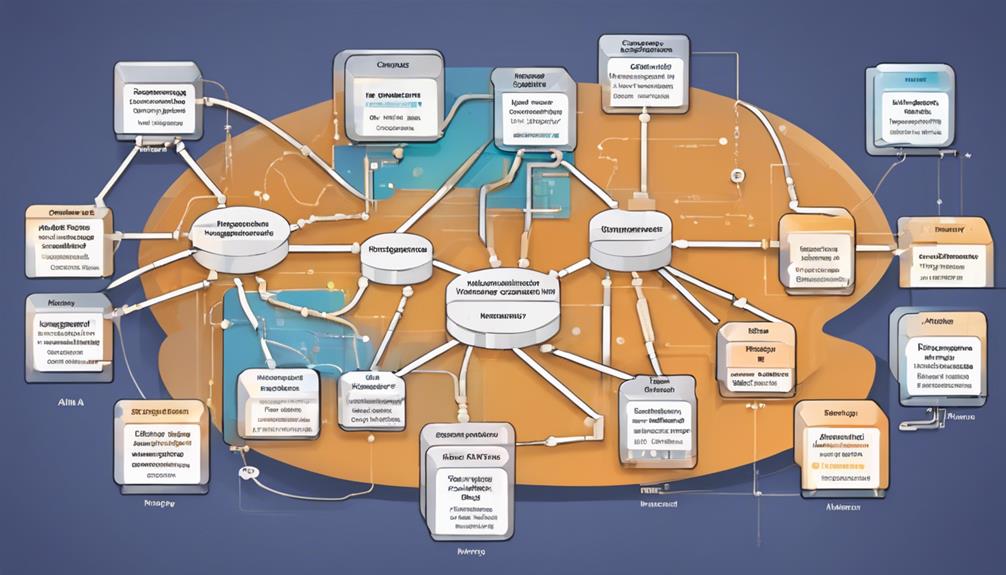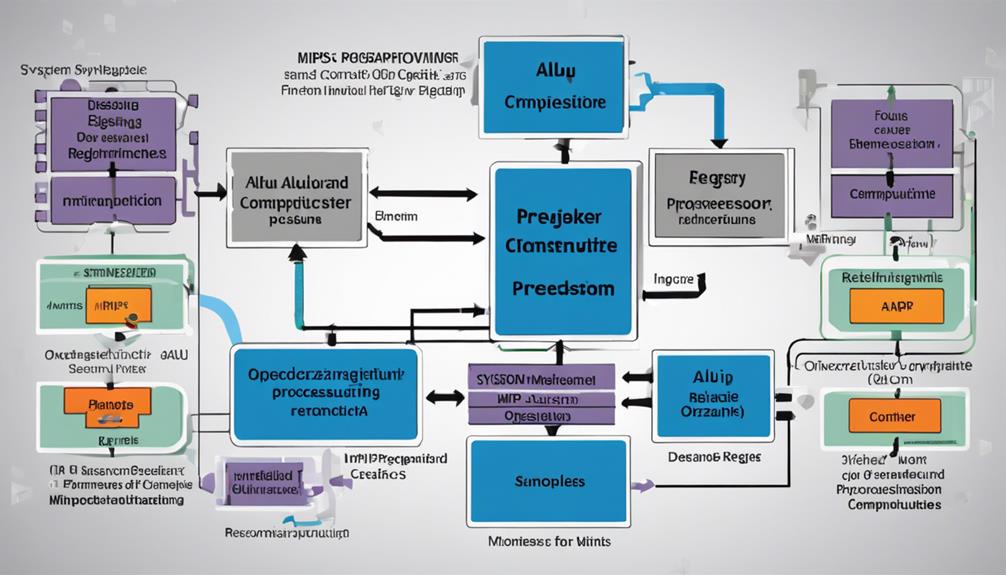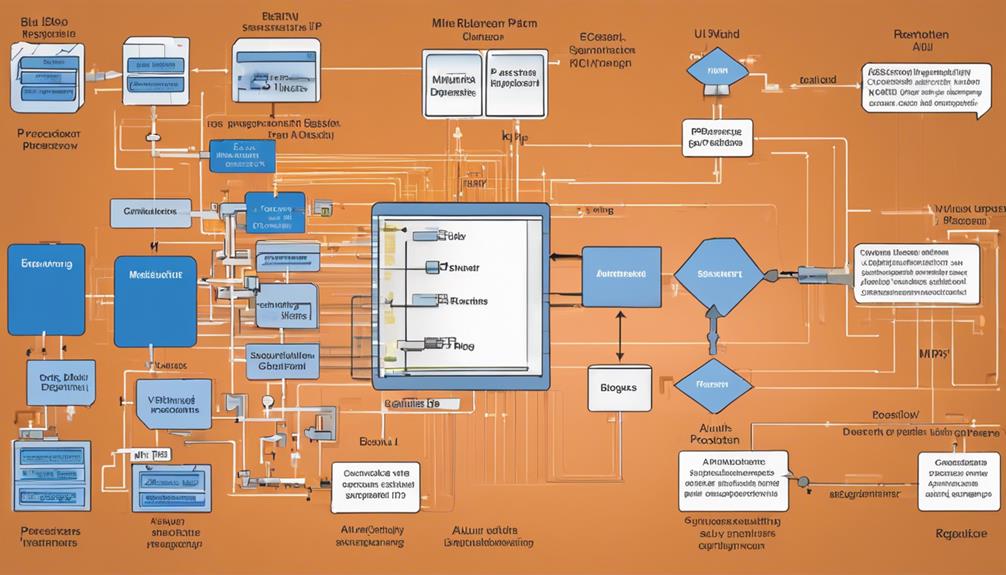Explore the intricacies of computer organization and design through the MIPS edition PDF. Immerse yourself in MIPS architecture, understanding its efficiency and simplicity. Uncover the importance of memory hierarchy and instruction set architecture. Investigate how parallel processing and pipeline stages enhance system performance. Witness MIPS in action in consumer electronics, automotive systems, and networking equipment. Improve performance with optimized code execution and branch prediction. Delve deeper into advanced topics such as parallel processing techniques and memory hierarchy optimization, pushing the boundaries of computer design. Further investigate the evolving landscape of computing technologies.
Understanding MIPS Architecture

Let's explore the MIPS architecture, a fundamental concept in computer organization and design. MIPS (Microprocessor without Interlocked Pipeline Stages) architecture is a reduced instruction set computing (RISC) architecture known for its simplicity and efficiency. The MIPS instruction set is designed to perform a variety of tasks using a streamlined set of instructions, making it easier to optimize performance and power consumption.
In the MIPS architecture, instructions are divided into three formats: R-type, I-type, and J-type. R-type instructions are used for arithmetic and logical operations, I-type for data transfer and immediate values, and J-type for jump instructions. Each instruction is represented by a 32-bit binary number, with the opcode specifying the operation to be performed.
The MIPS architecture emphasizes a large number of general-purpose registers, promoting a register-based design that reduces memory access times. This design choice enhances the speed and efficiency of the processor, making it a popular choice for embedded systems, networking devices, and academic research.
Understanding the MIPS architecture and instruction set is essential for delving deeper into computer organization and design.
Fundamentals of Computer Organization
Understanding the fundamentals of computer organization provides a solid foundation for comprehending the intricate workings of modern computing systems. To explore further into this topic, consider the following key aspects:
- Memory Hierarchy: This concept emphasizes the organization of memory in a computer system, ranging from high-speed caches to slower main memory and storage devices, optimizing performance and efficiency.
- Instruction Set: The instruction set architecture defines the set of instructions a processor can execute, influencing the capabilities and efficiency of a computing system.
- Pipeline Stages: The pipeline stages represent the different phases through which instructions pass in a processor, enhancing performance by enabling parallel processing of instructions.
- Data Path: The data path is the physical implementation of a processor's architecture, illustrating how data flows within the processor during instruction execution, essential for efficient computation.
Grasping these fundamental concepts will pave the way for a deeper understanding of computer organization and design principles.
Exploring System Design Principles

Exploring the domain of system design principles reveals the fundamental concepts that shape the architecture and functionality of computing systems.
The memory hierarchy plays an essential role in system design, organizing memory into different levels based on speed and size to optimize performance.
Understanding parallel processing is important as it involves simultaneously executing multiple tasks to enhance efficiency and speed.
Instruction set design is another key aspect, determining the operations a processor can perform and how they're encoded. Efficient instruction sets are critical for maximizing system performance.
Pipelining is a technique that allows multiple instructions to be processed simultaneously by breaking down the execution of instructions into smaller stages. This enhances throughput and overall system speed.
Application of MIPS in Practice
The practical implementation of MIPS architecture in real-world systems offers a hands-on perspective on how system design principles manifest in actual computing environments.
When exploring the application of MIPS in practice, you can witness firsthand its impact on various real-world applications. Here's a deeper look at its practical implementation:
- Real world applications: MIPS architecture finds extensive use in consumer electronic devices such as routers, gaming consoles, and set-top boxes.
- Practical implementation: Engineers leverage the simplicity and efficiency of MIPS to design embedded systems for automotive applications like in-car infotainment systems.
- Real-world impact: MIPS processors are employed in networking equipment to handle high-speed data transmission, ensuring reliable connectivity.
- Efficient performance: The practicality of MIPS architecture shines through in scenarios where low power consumption and high performance are essential, like in IoT devices.
Enhancing Performance With MIPS

Boost performance by optimizing code execution with MIPS architecture's advanced features. Leveraging pipeline optimization techniques in MIPS processors allows for the efficient execution of multiple instructions simultaneously. By breaking down the instruction execution process into stages, such as fetch, decode, execute, memory, and writeback, pipelines help reduce the overall execution time of programs.
Additionally, branch prediction plays an important role in enhancing performance with MIPS. Predicting the outcome of conditional branches enables the processor to speculatively execute instructions, thereby avoiding stalls in the pipeline caused by branch mispredictions. This results in a smoother flow of instructions and improved overall performance.
Incorporating these advanced features of MIPS architecture into your code can greatly enhance the efficiency and speed of program execution. By optimizing the pipeline and utilizing branch prediction effectively, you can make the most out of the MIPS processor's capabilities and achieve better performance outcomes.
Advanced Topics in Computer Design
Explore intricate aspects of computer design to investigate advanced topics that push the boundaries of technological innovation. When delving into advanced computer design, you encounter cutting-edge concepts that shape the future of computing.
Here are some key areas to focus on:
- Parallel Processing Techniques: Delve into the world of parallel processing, where multiple computations occur simultaneously. Understand how parallelism enhances performance and efficiency in modern computer systems.
- Memory Hierarchy Optimization: Uncover the optimization strategies employed in memory hierarchies to minimize access times and boost overall system performance. Explore cache design, virtual memory management, and prefetching techniques.
- Advanced Instruction Set Architectures: Learn about intricate instruction set designs that cater to diverse application requirements, balancing complexity and efficiency.
- Emerging Technologies in Computer Architecture: Stay updated on the latest advancements in computer architecture, such as quantum computing, neuromorphic computing, and silicon photonics, that are reshaping the landscape of computational capabilities.
Conclusion
To sum up, the MIPS architecture provides a thorough understanding of computer organization and design principles. By delving into system design, implementing MIPS in practice, and enhancing performance, you can gain valuable insights into advanced topics in computer design.
With the knowledge gained from this edition, you can apply these concepts to improve your own computer systems and optimize performance. Keep learning and experimenting to further expand your skills in computer organization and design.




